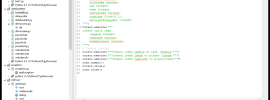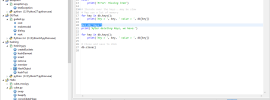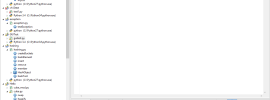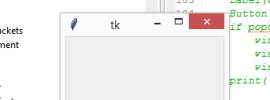In the previous article, we covered creating and accessing databases with Sqlite. In this article, we continue our look at the Python database APIs. You must download a separate DB API module for each database you need to access. Modules exist for … [Continue reading]
Python Database Programming: Part Five

In most cases when you are doing database programming, the database will be up and running. Your website hosting, for example, may have MySQL database access included. Your IT department may have standardized on a particular database, such as Oracle, … [Continue reading]
Python Database Programming: Part Four
In the previous article, we introduced the concept of relational databases. In this article, we introduce the Structured Query Language, or SQL. Python Database Programming: SQL SQL (pronounced "sequel" or "S-Q-L") defines a standard language for … [Continue reading]
Python Database Programming: Part Three
In the previous article, we showed how to create, access and modify a persistent dictionary in Python using the dbm module. In this article, we will consider using Python to create, access and modify a relational database. The dbm modules work … [Continue reading]
Python Database Programming: Part Two

In the previous article, we introduced Python database programming , the concept of persistent dictionaries, and different database modules such as dbm. In this article, we will put it all together and use the dbm module to create, access and modify … [Continue reading]
Python Database Programming: Part One
Most large enterprise-level systems use databases for storing data. In order for Python to be capable of handling these types of enterprise applications, the language must be able to access databases. For Python database programming, Python … [Continue reading]
Tkinter GUI Framework: Part One

There is wide support for writing GUIs with Python with many different toolkits. These toolkits, binary modules for Python that interface with native code written in C/C++, all have different APIs and different feature sets. Only one comes with … [Continue reading]
Python Iterators: Part Seven
The map, zip and filter built-in functions also became iterators in Python 3.0, as did range. This conserves space, as the result list does not have to be produced all at once in memory. All three process iterables and return iterable results in … [Continue reading]



Recent Comments